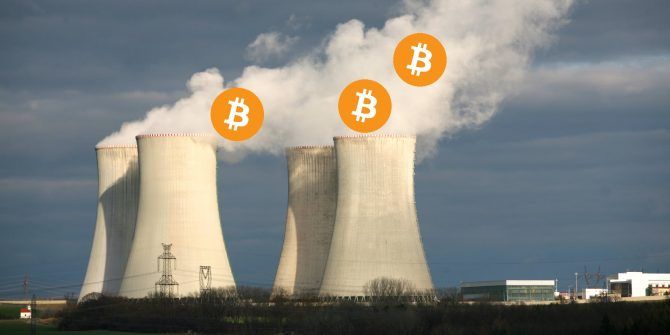Bitcoin is one of the best-known cryptocurrencies. After hitting mainstream news in late 2017, Bitcoin has achieved even higher financial valuations and has transformed from a derided form of digital money into a respected financial product.
Bitcoin mining uses phenomenal amounts of electricity to perform computational tasks to generate new Bitcoin. Electricity production is generally an environmentally harmful endeavor, and Bitcoin is increasingly contributing to climate change and hurting the planet.
What Is Bitcoin Mining?
Throughout the years, there have been many attempts at digital currencies. However, most had failed to overcome the double-spend problem. When you enter a store and hand over a banknote, you no longer have the note and cannot spend it again. Digital currencies were previously easy to copy, and so you could use the same token multiple times.
Satoshi Nakamoto, the creator or creators of Bitcoin, developed the blockchain to prevent the reuse of a token. Transactions are written to a shared ledger, which is repeated across a network of computers. However, this process requires computing power from the Bitcoin network. Although some people may offer this for free, Nakamoto opted not to rely on this kindness and found a way to incentivize the process.
Before posting the transaction to the blockchain, users verify the transactions. These are done in blocks of approximately 2,500 transactions. For each block validated, the user earns a portion of Bitcoin. This process is known as mining and is a common feature across all cryptocurrencies.
Bitcoin was the first network to overcome the double-spend dilemma with blockchain and mining, but the method has been widely adopted across the industry.
Why Is Bitcoin Mining Harmful?
Although mining is a standard operational process for most cryptocurrencies, the exact method varies. For Bitcoin, mining relies on a Proof of Work algorithm. To receive Bitcoin (BTC) payment for mining a block, you must be the first user to generate the proof of work. This is a computational task to find the target hash set in the block. Although this has the desired effect of incentivizing mining, it’s also environmentally damaging.
In effect, miners are asked to spend resources guessing a code in return for Bitcoin. As only the first user to generate the proof of work is rewarded with the currency, it is a competitive race where those with the highest-powered equipment dominate. This has a two-fold environmental effect. The hardware used for Bitcoin mining might otherwise have been used in consumer equipment, forcing an increase in electronics production.
Graphics cards particularly have been affected by this surge in demand. Since 2017, when Bitcoin first became a household name, prices jumped alarmingly, making the components essentially unaffordable for most people. This has a knock-on impact on electronics more broadly, too.
Perhaps a computer user could have upgraded their PC by changing the graphics card but couldn’t afford one. Then they may have replaced the entire computer instead. More recently, this has combined with a wide range of shortages and supply chain issues, causing graphics cards to become extremely expensive.
The second environmental impact of Bitcoin mining is the use of electricity. Although the entire network requires electricity, mining is the most power-hungry part of the process. The calculations alone would be impactful, but when combined with the winner-takes-all approach, the computers are worked extremely hard across long periods, using more electricity than would be the case in a more efficient system.
The Environmental Impact of Bitcoin
To be the first to achieve the Proof of Work for each block, you’ll need to have a powerful computer. However, when worked hard, the devices will generate a lot of heat. This is a problem in its own right, as overheated machines generally fail faster, but it also warms up the surrounding space. Unless you actively manage the room temperature, the components won’t achieve optimal performance, reducing your chances of successfully mining Bitcoin.
To create the ideal environment, you would need a cooling system, requiring renting a purpose-built computing space or a server room. However, you’d need to be sure you would generate enough income to offset your costs from the rental, computing equipment, and electricity. As Bitcoin mining has become more difficult over time, it has consolidated mining capability, too.
Despite the currency’s libertarian beginnings, the mining process has resulted in those with significant financial backing dominating. As in other areas of finance, each miner seeks the edge over other users. As equipment costs are relatively fixed, the primary variable is the cost of electricity. As climate change has become a more pressing concern, many countries have turned away from coal-powered electricity generation.
However, cleaner alternatives are generally more expensive, while coal-backed electricity is often substantially cheaper. Miners using this dirtier form of electricity are likely to find it more profitable to mine Bitcoin. Notably, China still generates a vast proportion of its electricity through coal burning. Consequently, miners in China have a competitive edge over their cleaner-powered counterparts.
Similarly, a sizeable portion of the world’s electronics are manufactured in China, making equipment more affordable for the country’s miners. However, the Chinese government recently pledged to move toward more sustainable electricity generation over the coming years. This had the unexpected side-effect of pushing Chinese-operated Bitcoin farms, large spaces dedicated to mining, into other coal-based areas like Iran.
In early 2021, Tesla, the electric vehicle company headed by Elon Musk, invested in sizeable amounts of Bitcoin with plans to allow customers to purchase their new car using the cryptocurrency. Although met with initial enthusiasm, Tesla’s investment in Bitcoin damaged its environmental credentials. According to Digiconomist, a cryptocurrency analysis platform, the Bitcoin network has an annual carbon footprint of 48.52 Mt of CO2, roughly equivalent to the carbon footprint of Bulgaria.
That’s a considerable impact across a year, but the single transaction footprints are even more alarming. As detailed in Digitconomist’s Bitcoin Energy Consumption Index, a single Bitcoin transaction has the same carbon footprint as over a million Visa transactions, consumes as much power as an average US household across a month, and generates 100 grams of electronic waste.
Can Bitcoin Be Green?
Some people note that traditional financial systems have a substantial environmental impact. Given how intertwined commercial finance is with capitalism and market economies, this only makes the problem more acute and harder to overcome. However, we don’t progress towards a cleaner, greener planet by creating more environmental harms instead of removing existing ones.
It is possible to accept that the traditional financial system is detrimental to the environment and believe that Bitcoin is also environmentally damaging. Cryptocurrency enthusiasts might strongly suggest that Bitcoin is a greener form of currency because more can be done to improve computer equipment efficiency or change the Bitcoin mining protocol to reduce the process’s energy requirements.
However, a key argument against Bitcoin is that it currently serves so little of the global population. Dominant payment processors like Visa or Mastercard process around 24,000 transactions per second. The Bitcoin network currently processes around seven transactions per second. Even if changes to the protocol speed up processing, Bitcoin still has a substantial impact on the environment for a minimal effect on global finance.
Fundamentally, Bitcoin has drifted away from the original proposed purpose as a currency. Instead, BTC is increasingly viewed as an asset. Institutions, apps, and advisors suggest investing in Bitcoin, not because it offers a vision of the future, but as it has value in the market in a similar way to gold. The volatile price of Bitcoin shows how investors still aren’t sure how to value Bitcoin either.
Cryptocurrencies do have a purpose, though. Platforms like Ethereum allow you to set up smart contracts on the blockchain, a far more practical application of the technology. Ethereum also has a comparatively reduced impact on the environment.
Still, cryptocurrency-mandated mining essentially requires you to utilize electricity for fundamentally wasteful calculations. The electricity is pumped into mining hardware, and the majority is lost to heat.
Unless this principle function of cryptocurrency mining is addressed, Bitcoin and similar digital currencies will always be harmful to the environment.
Are Cryptocurrencies the Future?
In the years since Bitcoin’s launch, thousands of cryptocurrencies have come online, all using similar underlying technology. Fundamental to the entire sector is the blockchain, arguably the most crucial innovation Bitcoin brought about.
While they all have varying mining methods, primarily, cryptocurrencies encourage the use of resources and energy. To protect the planet and avert the coming climate emergency, we should be using fewer resources and transitioning to renewable energy sources.
Cryptocurrencies appear directly opposed to this position, consuming energy to sustain a potentially over-engineered and complex alternative to traditional finance. Still, some organizations seem intent on greenwashing and launching cryptocurrencies to reward sustainable behavior.
Image Credit: haak78/Depositphotos
About The Author

